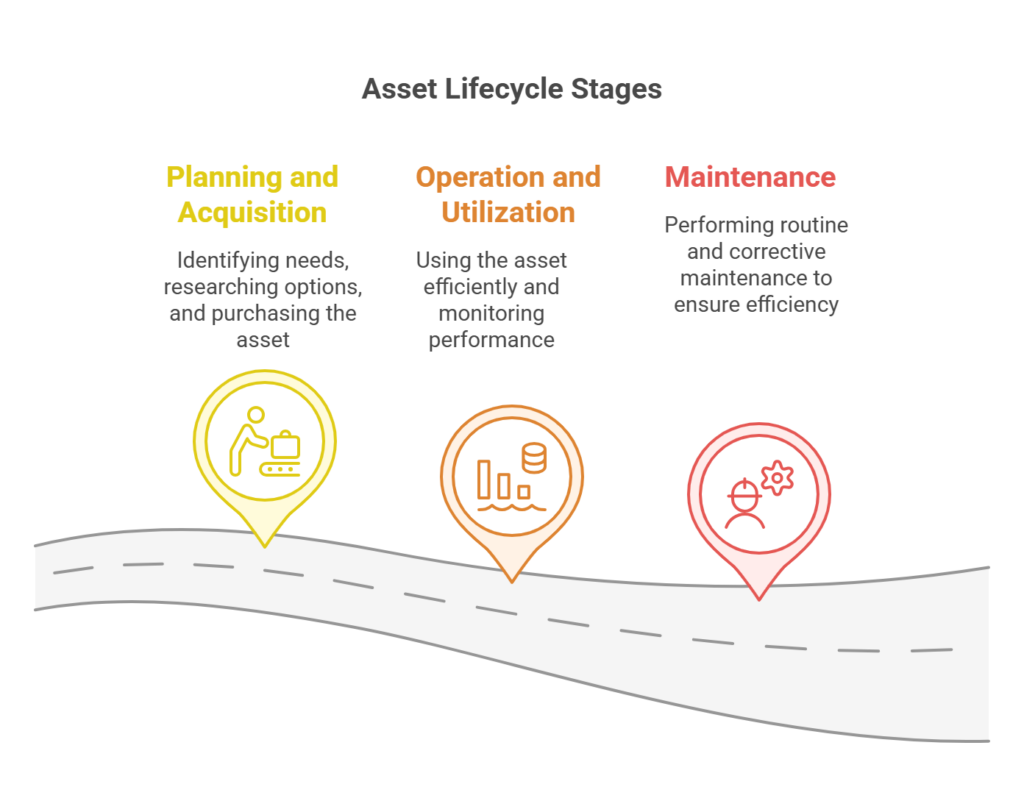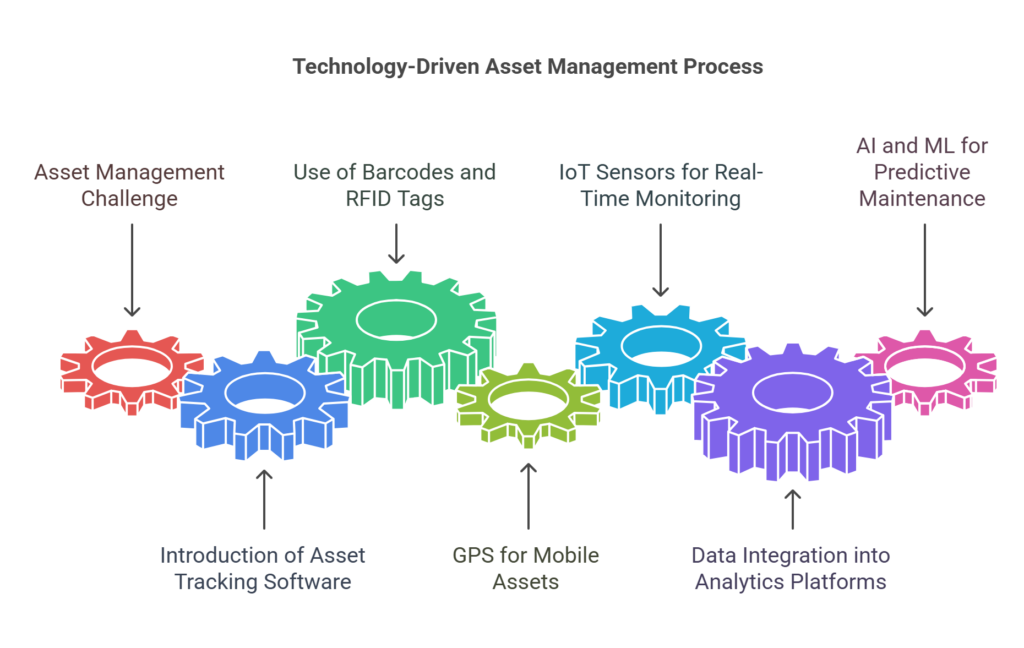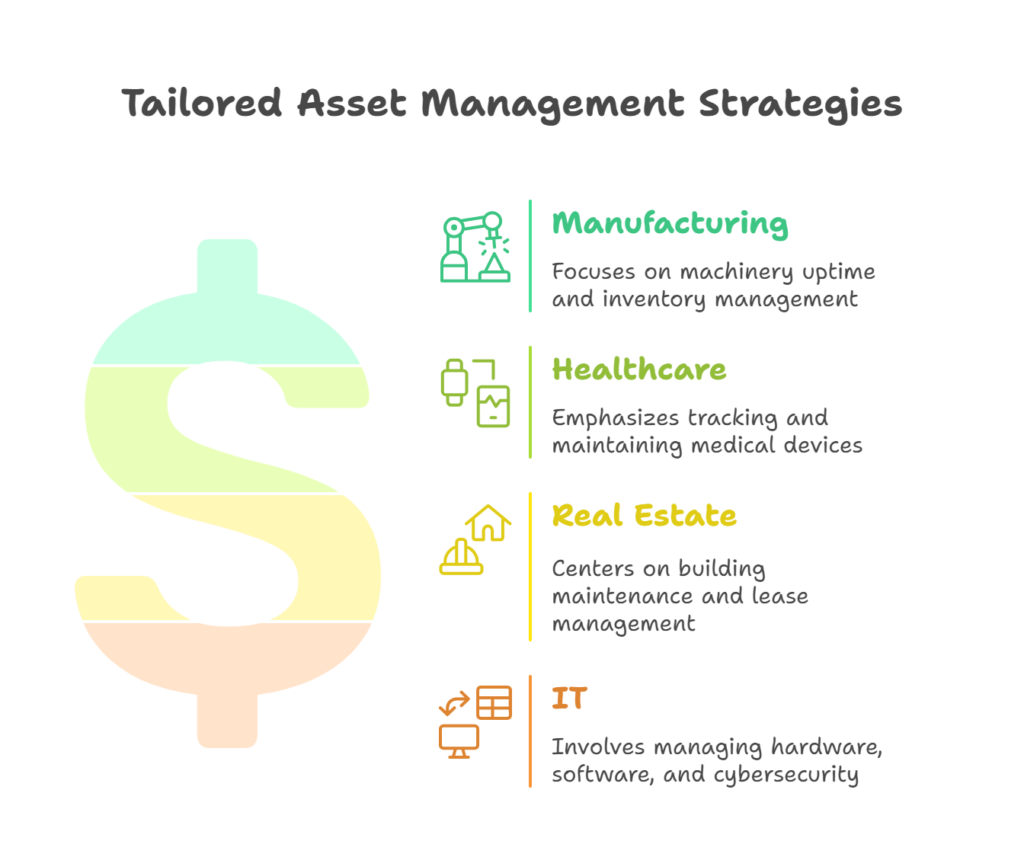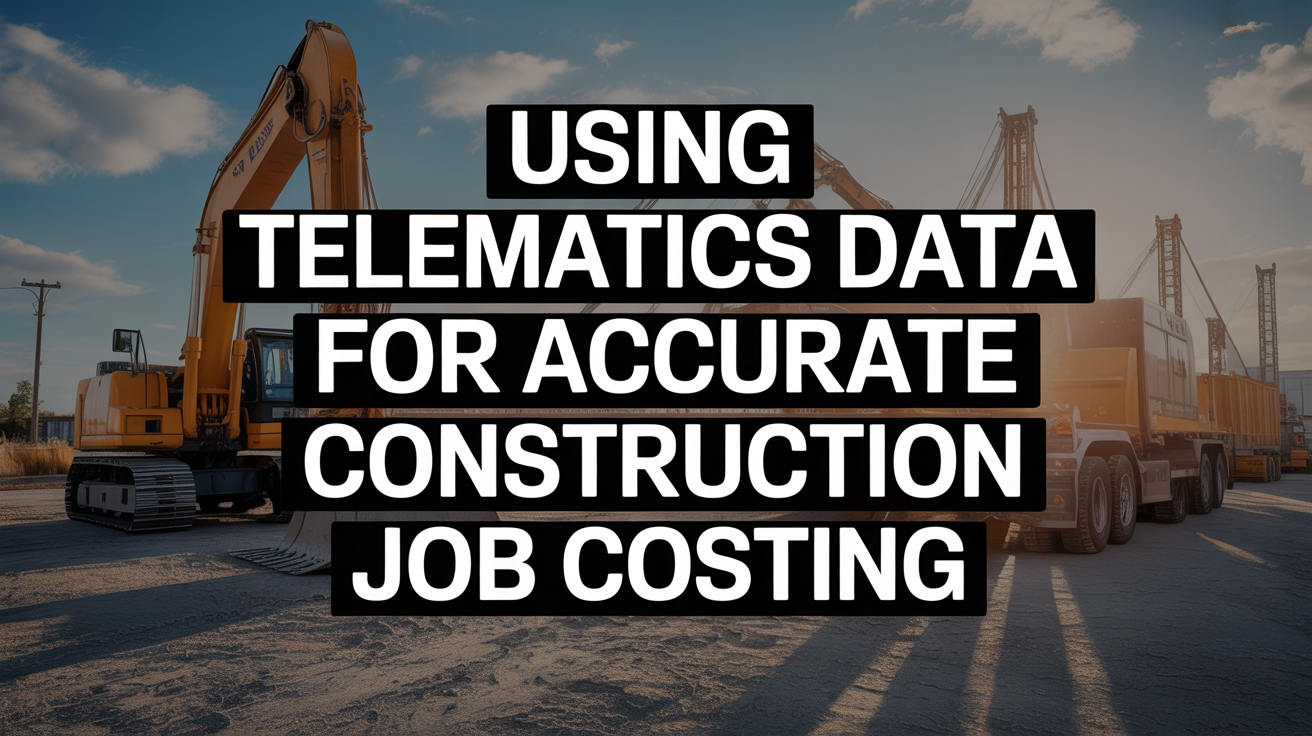Did you know businesses lose billions every year simply because they aren’t properly managing their assets? It’s a staggering thought! 🤯 This reality highlights just how essential solid asset oversight is in today’s competitive environment. Asset management isn’t merely about keeping a list of stuff you own; it’s a smart, strategic approach that can seriously boost your company’s financial performance, make operations run smoother, and pave the way for long-term success.
We’re going to unpack the core ideas behind asset management and show you how getting it right can truly transform your business. You’ll pick up practical ways to get the most out of your assets’ lifespans, reduce costs, and keep potential risks in check. Crucially, we’ll look at how modern tools and smart practices give you that much-needed edge.
Defining Asset Management
So, what exactly *is* asset management? At its heart, it’s the systematic process an organization uses to manage its assets – both physical (like machinery, buildings, vehicles) and intangible (like software licenses, intellectual property) – over their entire lives. The main goals are pretty clear: get the absolute best value from these assets, keep risks associated with them low, optimize their performance, and make sure they’re helping the company meet its overall objectives. It’s fundamental for smart resource allocation and making sound business decisions.
It goes way beyond just ticking items off an inventory list. True asset management involves strategic thinking. This means planning for an asset’s entire journey, from deciding you need it, to buying it, using it, maintaining it, and eventually retiring it. It incorporates financial planning, risk evaluation, and ensuring everything aligns perfectly with your broader business goals. It’s all about creating and preserving value. As the experts put it:
“Asset management involves the balancing of costs, opportunities and risks against the desired performance of assets to achieve an organisation’s objectives.” -The Institute of Asset Management
Key Components of Effective Asset Management
To build a strong asset management framework, you need a few key ingredients working together. First up is asset tracking – this is the foundation. You absolutely need to know what assets you have, where they are located, who is responsible for them, and their current condition. Without this basic visibility, managing anything effectively is nearly impossible!
Next comes lifecycle management. This means overseeing an asset through its entire journey: from the initial planning and purchase stages, through its operational use and necessary upkeep, right up to its eventual disposal or replacement. Alongside this runs risk assessment – identifying potential problems like equipment failure, safety hazards, financial losses from downtime, or non-compliance issues. You need to understand the ‘what ifs’.
Finally, performance optimization ties it all together. Are your assets doing what they’re supposed to, efficiently and effectively? This involves monitoring performance, analysing data, and making adjustments to improve output, reliability, and cost-effectiveness. These components aren’t isolated; they feed into each other, creating a comprehensive picture that helps you make better decisions. It allows you to look at assets from different perspectives:
“Asset management enables an organisation to examine the need for and performance of assets and asset systems at different levels.” -The Institute of Asset Management
The Asset Lifecycle: From Acquisition to Disposal
Think of an asset’s life as a journey with distinct stages. It all begins with planning and acquisition. This is where you figure out what you need, research options, maybe look at leasing versus buying, select suppliers, negotiate prices, and finally, make the purchase and bring the asset into the fold. Getting this stage right sets the foundation for the asset’s entire contribution to your business.
Once acquired, the asset enters the operation and utilization phase. It’s put to work! During this longest phase, the focus is on using the asset as intended, monitoring its usage patterns, and ensuring it consistently delivers the performance expected. Is it being used efficiently? Is it meeting operational targets? These are key questions here.
Running parallel to operation is maintenance. This critical stage involves keeping the asset in good working order. It can range from routine preventative tasks (like oil changes or software updates) to corrective repairs when things go wrong. Smart maintenance strategies aim to minimize downtime, extend the asset’s useful life, ensure safety, and keep running costs predictable. Proactive is usually much better (and cheaper!) than reactive. ✅

Eventually, every asset reaches the end of its useful life for your organization. This is the disposal stage. It might involve decommissioning old equipment, selling a vehicle, recycling components, or formally retiring software. A key part of this stage is evaluating when an asset costs more to keep running than it’s worth, considering factors like depreciation and rising maintenance expenses. Making the right call here is crucial:
“The final stage of the asset lifecycle is the disposal of the asset. At this point, it’s important to weigh the depreciation of the asset against the rising cost of maintaining it.” -IBM
Risk Management in Asset Management
Good asset management is intrinsically linked with managing risk. When you oversee your assets properly, you’re naturally identifying, assessing, and finding ways to reduce potential problems. Common risks include things like unexpected equipment breakdowns causing production halts, financial hits from unplanned major repairs or lost revenue during downtime, failing to meet safety or environmental regulations, physical safety hazards for employees or the public, and even cybersecurity threats if IT assets aren’t managed securely.
Strategies to lower these risks are woven into the asset management process. Think scheduled preventative maintenance to catch issues early, regular inspections and audits to verify condition and compliance, having adequate insurance coverage, developing backup plans for critical asset failures, putting strong security measures in place for digital and physical assets, and having clear, responsible procedures for asset disposal. It’s about making choices based on a clear understanding of potential downsides. 🤔
Financial Implications of Asset Management
Let’s talk money! 💰 Effective asset management has a direct and positive impact on your company’s financial health. One of the most immediate benefits is cost reduction. By minimizing unexpected downtime, optimizing how much you spend on maintenance (not too much, not too little!), avoiding buying assets you don’t truly need, and potentially getting better value when you dispose of old assets, you can see significant savings.
Beyond just saving money, good practices improve your Return on Investment (ROI). Ensuring assets are used to their full potential, making them last longer through proper care, and making smarter choices about which assets to acquire in the first place all contribute to getting more value out of your investments. It also leads to much better budget allocation because you can more accurately forecast future maintenance needs and replacement costs, preventing nasty budget surprises.
Integrating asset management thinking with your financial management processes provides even deeper benefits. Accurately tracking asset depreciation for accounting purposes, linking asset performance data directly to financial results, and being able to clearly show the financial contribution (or cost) of specific assets helps build credibility and drives smarter financial decisions across the board. It fosters accountability:
“Integrate ITAM with IT financial management to earn more respect from the rest of your business. You will be able to communicate costs on a regular basis through showback or chargeback invoices and use financial management for managing demand and driving a cost-conscious culture.” -Camcode
Technology and Tools in Modern Asset Management
Trying to manage assets effectively today without leveraging technology is like trying to row a boat with a teaspoon – possible, but incredibly inefficient! Modern tools have revolutionized asset management. Asset tracking software, often part of larger Enterprise Asset Management (EAM) or Computerized Maintenance Management Systems (CMMS), provides a central database for all asset information. Technologies like barcodes, QR codes, and RFID tags make tracking physical assets quick and accurate, while GPS is invaluable for mobile assets like vehicles or construction equipment.
But it doesn’t stop there. We’re seeing exciting advancements with the Internet of Things (IoT), where sensors placed on equipment can continuously monitor its condition (temperature, vibration, usage hours) in real-time. This data feeds into powerful analytics platforms, providing insights that were previously impossible to get. Artificial intelligence (AI) and machine learning (ML) are taking it a step further, enabling predictive maintenance – forecasting potential failures *before* they happen, allowing you to schedule maintenance proactively and avoid costly downtime. 💡

This is where platforms like Nektar.io come into play. Nektar.io provides sophisticated solutions designed for the complexities of modern asset management. It helps businesses centralize asset data, automate tracking and maintenance workflows, and harness the power of analytics to provide actionable insights. By using tools like Nektar.io, companies can move beyond basic spreadsheets and gain real control and visibility over their asset base, making smarter, data-driven decisions. Manual methods just can’t keep up:
“Asset management software like an enterprise asset management system (EAM) helps optimize asset performance from acquisition to disposal in a way that manual tools like Excel never could.” -IBM
Best Practices for Implementing an Asset Management Strategy
Ready to get serious about asset management? Great! Start with the absolute foundation: creating a thorough asset inventory or register. This means identifying every significant asset you own and capturing key details – things like a unique ID number, its current location, its condition, who is responsible for it, the purchase date and cost, its estimated value, and its maintenance history. Accuracy and completeness here are non-negotiable.
Next, you need to know what success looks like. Define clear objectives for your asset management program. What are you trying achieve? Lower maintenance costs? Better asset uptime? Improved compliance? Then, establish specific Key Performance Indicators (KPIs) to measure progress. Examples could include the percentage of planned vs. unplanned maintenance, average asset uptime, cost per operating hour, or asset utilization rates. Make sure these metrics align with your overall business goals.
Clear processes and defined responsibilities are essential. Everyone involved needs to understand their role in managing assets, from reporting issues to performing maintenance to updating records. Document these procedures clearly. Training is also key – make sure your team understands the ‘why’ behind asset management and how to use any tools or systems correctly. Fostering a company-wide culture that values assets makes a huge difference. Keeping information current is also vital:
“Consider integrating content updates into the proposal closeout process. This means updating libraries with any new content within a week following proposal submission.” -OpenAsset (Note: While this quote relates to proposal content, the principle of timely updates applies broadly in asset management).
Finally, asset management isn’t a “set it and forget it” activity. It requires continuous improvement. Regularly review your performance data against your KPIs. Conduct periodic audits – both physical checks of assets and reviews of your processes – to ensure everything is working as intended. Use the insights you gain to refine your strategy, update procedures, and adapt to changing business needs or new technologies. It’s an ongoing cycle of improvement. 📈
Industry-Specific Asset Management Considerations
While the core principles of asset management are universal, how they’re applied can vary quite a bit depending on the industry. In manufacturing, for instance, the focus might be heavily on maximizing the uptime and operational efficiency of production machinery, using predictive maintenance to avoid costly line stoppages, and managing spare parts inventory effectively. Healthcare organizations have a critical need to track expensive medical devices, ensure they are properly calibrated and maintained for patient safety, and meet strict regulatory compliance standards.
For businesses in real estate or facilities management, asset management often revolves around maintaining buildings and infrastructure – HVAC systems, elevators, electrical systems – optimizing space utilization, managing energy consumption, and tracking lease agreements. In the IT sector, IT Asset Management (ITAM) is crucial for tracking hardware (servers, laptops, mobiles) and software assets, managing licenses to ensure compliance and control costs, safeguarding cybersecurity, and managing the lifecycle of data center equipment.
Each sector faces unique hurdles. Healthcare and finance grapple with stringent regulations. Utilities and transportation deal with assets spread over vast geographical areas. IT constantly battles rapid technological obsolescence. Recognizing these specific challenges and tailoring the asset management approach, tools, and metrics accordingly is key to achieving success in any given industry.

The Future of Asset Management
The field of asset management is constantly advancing, driven by technology and changing business priorities. Looking ahead, we can expect even greater use of AI and machine learning, moving beyond predictive maintenance (what might fail) to prescriptive analytics (what *should* we do about it?). Digital twins – virtual replicas of physical assets – will become more common, allowing for simulation, analysis, and optimization in a virtual environment before applying changes in the real world. We’ll also see tighter integration between asset management systems and other core business platforms like ERP and financial software, creating a more unified view of operations.
Sustainability and Environmental, Social, and Governance (ESG) factors are also playing an increasingly important role. Asset decisions – from acquisition to disposal – will be viewed through the lens of environmental impact, energy efficiency, and responsible resource use. To stay competitive, businesses need to embrace these changes. This means being open to adopting new technologies, ensuring high-quality data collection and analysis capabilities, investing in training for their workforce, and keeping a close eye on industry trends. Being proactive is the name of the game! ✨
FAQ
What is the main goal of asset management?
The primary aim is to get the maximum value from an organization’s assets throughout their entire lifecycle. This involves balancing performance, costs, and risks to ensure assets effectively support the achievement of the organization’s strategic objectives, whether that’s profitability, service delivery, safety, or compliance.
How does asset management differ from inventory management?
Inventory management typically focuses on tracking items that are intended for sale or consumption in the production process – things like raw materials, components, or finished goods. Asset management, conversely, deals with the items a business *uses* to operate and generate value – like machinery, equipment, buildings, vehicles, and software. It covers the asset’s entire life, including maintenance, performance, and strategic planning, not just stock levels.
What are some common challenges in implementing an asset management system?
Some frequent hurdles include the initial difficulty of gathering accurate and complete data for all assets (especially if records are poor to begin with), getting buy-in and cooperation from different departments, integrating the asset management system with other existing software, ensuring data stays accurate over time, finding the budget or skilled personnel, and overcoming general resistance to changing established processes.
How often should assets be audited?
There’s no single answer, as it depends heavily on the type, value, criticality, and associated risks of the assets, as well as any regulatory requirements. High-value, critical, or mobile assets might warrant annual or even more frequent physical verification and condition assessment. Lower-risk, stationary assets might be audited less often, perhaps every two or three years. The key is to establish a regular, risk-based schedule and stick to it consistently.
Can small businesses benefit from asset management practices?
Absolutely! 👍 While they might not need a massive EAM system, even small businesses rely on valuable assets like computers, vehicles, tools, or specialized equipment. Implementing basic asset management practices – knowing what you have, where it is, scheduling simple preventative maintenance, and planning for replacements – can prevent unexpected costly breakdowns, improve day-to-day efficiency, and save significant money in the long run. Scalable tools and methods make it very achievable.
Conclusion
As we’ve seen, asset management is far more than just keeping tabs on equipment. It’s a vital strategic discipline that directly impacts your company’s financial performance, operational resilience, and ability to manage Risk Management effectively. By embracing a lifecycle approach and focusing on optimization, businesses can unlock substantial cost savings, boost efficiency, and make much smarter, data-backed decisions.
Take a moment to think about your own organization’s approach to its assets. Are you truly maximizing their value and minimizing potential risks? If there’s room for improvement, now is the time to act. For businesses looking to streamline, modernize, and elevate their asset management capabilities, Nektar.io offers powerful solutions tailored for today’s challenges. We encourage you to explore Nektar.io’s platform and schedule a demo via our contact page to see firsthand how it can help transform your asset management strategy and drive better business outcomes. 🚀
Key Takeaways:
- Asset management is crucial for maximizing value and minimizing risks in business operations
- Effective asset management encompasses the entire lifecycle from acquisition to disposal
- Technology plays a pivotal role in modern asset management, offering advanced tracking and analytics capabilities
- Implementing best practices in asset management can lead to significant cost savings and operational efficiencies
- Nektar.io provides cutting-edge solutions to address complex asset management challenges in today’s business environment



